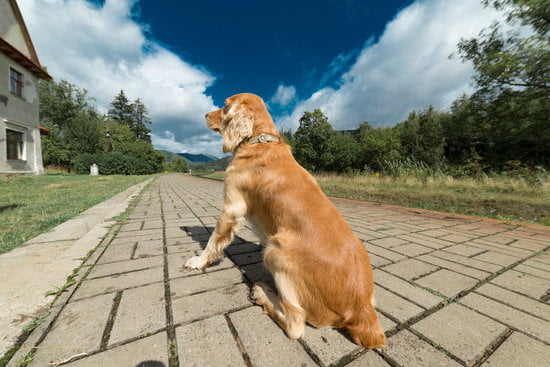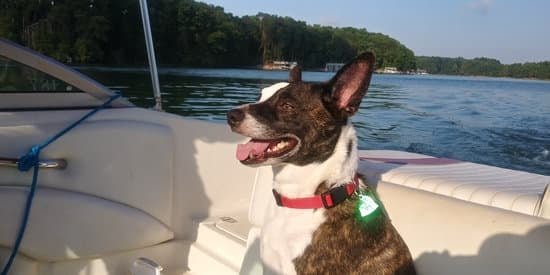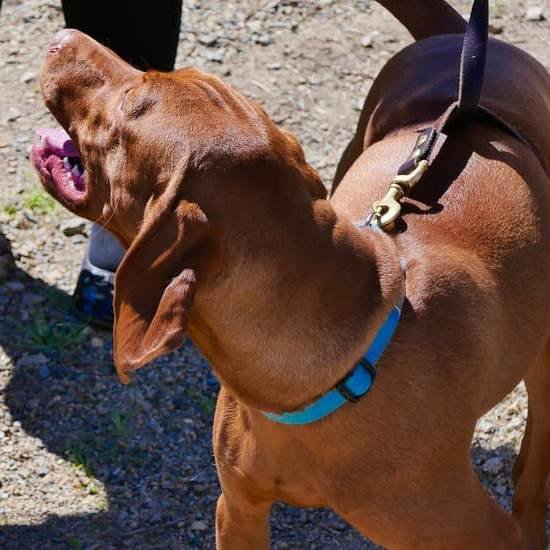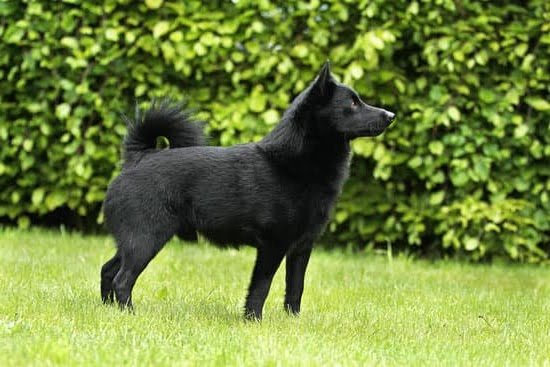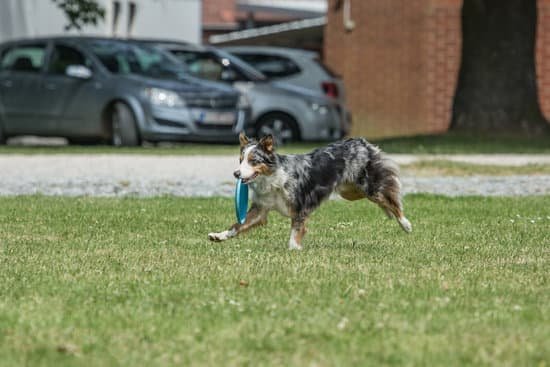Does your furry friend have a knack for turning your belongings into unrecognizable shreds? If you’re wondering how to train a dog that chews up everything, understanding the root cause is crucial. Dogs have a natural instinct to chew, but excessive chewing behavior can stem from various reasons. In this article, we will explore the possible triggers behind destructive chewing and discuss the importance of proper training in addressing this issue.
Dogs are born with an innate desire to chew, which serves multiple purposes. Chewing helps keep their teeth clean and healthy, relieves teething discomfort in puppies, and provides mental stimulation. However, when this natural instinct goes awry and results in the destruction of your prized possessions, it’s essential to dig deeper for underlying causes.
Excessive chewing can be triggered by numerous factors. It may be a result of boredom or anxiety, lack of mental or physical stimulation, or even curiosity. By understanding these triggers and taking proactive measures to redirect your dog’s behavior towards appropriate alternatives, you can effectively address destructive chewing habits.
That’s where proper training comes into play – creating clear boundaries and providing positive reinforcement go a long way in helping your furry companion curb their destructive tendencies. So let’s dive deeper into this topic and equip ourselves with effective strategies to train a dog that chews up everything.
Identifying the Triggers
Dogs have a natural instinct to chew, but when they start chewing up everything in sight, it can become a problem. In this section, we will explore the common triggers that cause dogs to engage in destructive chewing behavior. By identifying these triggers, pet parents can better understand their dog’s behavior and take steps to address it.
First and foremost, it is important to be aware of the items that your dog is prone to chewing on. Common household items such as shoes, furniture, and even electrical cords are often targeted by dogs. By observing what your dog tends to go after, you can take preventive measures such as keeping those items out of reach or using bitter sprays to deter them.
In addition to specific items, it is also crucial to pay attention to the situations or patterns that trigger destructive chewing. For example, some dogs may chew out of boredom when left alone for long periods of time. Others may chew due to separation anxiety or fear. By noting down these triggers, you can begin implementing strategies like crate training or providing mental stimulation toys to alleviate these underlying causes and discourage destructive chewing behavior.
To easily identify triggers and patterns, pet parents should observe their dog closely and take note of specific preferences and behaviors surrounding chewing episodes. Keeping a journal or log can be helpful in identifying trends over time. Understanding the why behind your dog’s destructive chewing is an essential step towards addressing the issue effectively.
Strategies for managing anxiety and boredom
One common trigger for destructive chewing is anxiety or boredom. Dogs who are anxious or bored may resort to chewing as a way of alleviating their stress or releasing pent-up energy. To address this, it is important to provide your dog with ample mental and physical stimulation.
To alleviate anxiety, consider incorporating calming techniques into your daily routine such as providing a safe space for your dog with cozy bedding and soothing music. You can also try using puzzle toys or interactive feeders to engage their minds and redirect their focus away from destructive chewing.
Physical exercise is equally important for managing boredom. Regular walks, play sessions, or even agility training can help drain your dog’s energy in a positive way. Additionally, providing a variety of toys that are safe and appropriate for chewing can also prevent boredom and encourage appropriate chewing behavior.
By addressing anxiety and boredom through mental and physical stimulation, pet parents can significantly reduce the likelihood of destructive chewing episodes in their dogs. This approach not only helps curb the unwanted behavior but also promotes holistic well-being for your furry friend.
Tackling Anxiety and Boredom
Destructive chewing in dogs can often be attributed to underlying anxiety or boredom. When dogs feel anxious or bored, they may resort to chewing as a way to alleviate their stress or to entertain themselves. As pet owners, it is important to address these underlying issues and provide appropriate mental and physical stimulation for our furry friends. By doing so, we can help reduce destructive chewing behaviors.
How Anxiety and Boredom Contribute to Destructive Chewing
Anxiety can manifest in many different ways for dogs, and one common outlet is through destructive chewing. Dogs may chew on objects as a way to self-soothe and calm themselves down when they are feeling stressed or anxious.
Similarly, boredom can lead dogs to engage in destructive chewing as a means of entertainment or as a release of pent-up energy. Understanding the role of anxiety and boredom in your dog’s behavior is crucial in addressing their destructive chewing habits effectively.
Practical Tips for Alleviating Anxiety and Providing Stimulation
There are various strategies that pet owners can implement to help alleviate anxiety and provide mental stimulation for their dogs:
- Establish a routine: Dogs thrive on structure and predictability. Creating a consistent daily routine that includes regular exercise, playtime, training sessions, and relaxation periods can help alleviate anxiety by providing a sense of security.
- Mental enrichment activities: Engaging your dog’s mind with puzzle toys, treat-dispensing toys, or interactive games can tire them mentally and keep them occupied. These activities provide mental stimulation and help redirect their energy towards appropriate outlets.
- Physical exercise: Regular physical exercise is essential for dogs’ overall well-being. Ensure your dog receives sufficient exercise through daily walks, play sessions at the park, or other forms of physical activity suitable for their breed and age.
- Training sessions: Consistent training not only helps teach your dog proper behavior but also provides mental stimulation. Incorporate training sessions into your daily routine, focusing on obedience and engaging their minds with new commands or tricks.
- Interactive playtime: Play interactive games with your dog, such as fetch or hide-and-seek. These activities not only provide physical exercise but also mental stimulation and a bonding experience between you and your furry companion.
Suggested Activities and Toys for Mental Stimulation
When it comes to providing mental stimulation for dogs, there are a variety of activities and toys that can keep them engaged and entertained:
- Food puzzle toys: These toys require your dog to solve a puzzle to access the treats inside, keeping them mentally stimulated while rewarding them with tasty treats.
- Nose work: Hiding treats around the house or in the yard and encouraging your dog to use their sense of smell to find them can be an excellent way to engage their mind and provide entertainment.
- Training games: Teach your dog new commands or tricks by incorporating training sessions into playtime. This challenges their cognitive abilities while reinforcing obedience.
- Playdates with other dogs: Social interaction with other dogs can provide mental stimulation for your furry friend. Arrange playdates with well-matched canine companions to allow for positive socialization experiences.
By addressing anxiety and boredom through mental and physical stimulation, pet owners can help reduce destructive chewing behaviors in their dogs significantly. Remember that every dog is unique, so understanding your own dog’s preferences is essential when selecting appropriate activities and toys for them. With patience, consistency, and a variety of stimulating options, pet owners can create an environment that fosters positive behavior in their canine companions.
Creating a Safe Environment
Creating a safe environment is an essential aspect of training a dog that chews up everything. Dog-proofing your home not only protects your belongings but also ensures the safety and well-being of your furry friend. By taking necessary precautions and providing alternatives, you can effectively discourage destructive chewing behavior in your dog.
The first step in dog-proofing your home is to identify and secure valuable or dangerous items out of reach. Dogs are naturally curious, and they tend to explore their surroundings through chewing.
Therefore, it is crucial to keep items such as shoes, electrical wires, or small objects that can be swallowed safely stored away or placed in inaccessible areas. Use baby gates or crate training if necessary to confine your dog to a designated area when you cannot supervise them.
Providing alternative chewing options is another key aspect of creating a safe environment for your dog. Dogs need an outlet for their natural instinct to chew, so it’s important to offer appropriate toys or bones that cannot be easily destroyed. Opt for durable chew toys made specifically for dogs and avoid giving them old shoes or items that resemble household objects. Regularly rotating the toys will help maintain your dog’s interest and prevent boredom.
In addition to securing items and providing appropriate chew toys, consider setting up designated chewing areas for your dog. This could be a specific room or space where you allow them access to safe items for chewing. By doing so, you teach them which items are acceptable while protecting the rest of your home from potential damage.
Remember, dog-proofing requires ongoing effort as puppies grow quickly and develop new curiosities as they age. Regularly evaluate the safety of your home environment and make adjustments accordingly. With consistent attention and adequate provisions, you can create a safe space where your dog can thrive without destructive chewing tendencies.
Redirecting and Reinforcing Positive Behavior
Dogs, like humans, often engage in destructive chewing behavior due to a variety of reasons. One effective way to address this issue is by redirecting their attention towards more appropriate items while reinforcing positive behavior. This section will explore the power of distraction as a training method and provide step-by-step techniques to achieve long-term behavioral improvement.
During episodes of destructive chewing, it is important to redirect your dog’s attention away from the item they are damaging and towards something acceptable. This can be achieved by offering them an alternative chew toy or bone that is specifically designed for dogs. By providing a suitable substitute, you can help fulfill their natural instinct to chew while protecting your belongings.
To reinforce positive behavior, it is essential to reward your dog when they choose the appropriate item to chew on. Positive reinforcement can be done through verbal praise, treats, or a combination of both. For example, when you see your dog chewing on the designated toy instead of your furniture, immediately offer verbal praise such as “good job” or “good boy/girl,” and give them a treat as a reward.
Consistency plays a crucial role in reinforcing positive behavior through distraction. Every time you catch your dog engaging in destructive chewing, use the redirection technique mentioned above. Over time, they will learn that certain items are off-limits while others are permitted for chewing.
It is important to note that consistency should also extend to all household members or caretakers. Everyone involved in your dog’s care should be aware of the training methods being used and follow them consistently. This will prevent confusion for your dog and ensure that they receive consistent messages about what is acceptable behavior.
| Step | Description |
|---|---|
| 1 | Identify and remove any items in the environment that your dog is likely to chew on. |
| 2 | Offer an alternative chew toy or bone that is safe and appropriate for your dog. |
| 3 | When you catch your dog chewing on the designated toy, immediately offer verbal praise and a treat as a reward. |
| 4 | Consistently use the redirection technique every time you notice your dog engaging in destructive chewing. |
| 5 | Ensure all household members and caretakers are aware of the training methods being used and follow them consistently. |
Redirecting and reinforcing positive behavior through the power of distraction can be highly effective in training a dog that chews up everything. By consistently implementing these techniques, you can help redirect their natural instinct to chew towards appropriate items while promoting long-term behavioral improvement.
Consistent Discipline and Boundaries
Emphasizing the Need for Consistency
One of the key factors in successfully training a dog that chews up everything is establishing clear rules and boundaries. Dogs thrive on consistency and routine, so it’s important to ensure that everyone in the household is on the same page when it comes to enforcing these rules. Inconsistency can confuse your dog and make it difficult for them to understand what behavior is acceptable and what is not.
To maintain consistency, make sure that all family members are aware of the rules and agree to enforce them consistently. Set clear expectations for your dog and communicate them effectively through both verbal commands and body language. Consistency also means being consistent with rewards and praise when your dog exhibits the desired behavior, reinforcing their understanding of what is expected of them.
Effective Discipline Techniques
When your dog does engage in destructive chewing despite your efforts, it’s important to have effective discipline techniques in place to address the behavior immediately. Time-outs can be an effective method to give your dog a break from their current environment if they are displaying excessive chewing behavior. This allows them time to calm down and reflect on their actions.
Firm verbal commands can also be powerful tools for discipline. Use a strong, assertive voice and say “no” firmly when catching your dog in the act of chewing something inappropriate. Redirect their attention towards something more appropriate by offering a chew toy or engaging them in a different activity.
It’s important to note that while discipline is necessary, it should never involve physical punishment or harsh methods. These approaches can lead to fear or aggression in your dog, making training more difficult and damaging the bond between you and your pet.
Avoiding Punishment-based Training Methods
While it may be frustrating when your dog continues to engage in destructive chewing despite all efforts, it’s crucial to avoid punishment-based training methods. Punishing your dog after the fact or in an unpredictable manner can create confusion, fear, and anxiety. Instead of punishing undesirable behavior, focus on redirecting your dog towards appropriate alternatives and rewarding them when they engage in desired behaviors.
Positive reinforcement is a highly effective training technique that uses rewards, such as treats, praise, or playtime, to encourage dogs to repeat the behavior you desire. When your dog refrains from destructive chewing or chooses an appropriate chew toy instead of household items, immediately praise them and offer a reward. This positive association will reinforce their understanding of what is acceptable and motivate them to continue behaving in a desirable manner.
By establishing consistent discipline techniques and avoiding punishment-based methods, you can effectively communicate expectations to your dog and guide them towards appropriate chewing behaviors. Remember that training takes time and patience, so stay dedicated to the process and celebrate small victories along the way.
Seeking Professional Help
While many dog owners may be able to successfully address their dog’s destructive chewing behaviors through training and management techniques, there are instances where professional help may be necessary. Consulting a dog trainer or behaviorist can provide valuable insights, guidance, and support in dealing with more challenging cases. Here are some scenarios where seeking professional help is recommended:
- Persistent or Escalating Destructive Chewing: If despite your best efforts, your dog’s destructive chewing behavior persists or worsens over time, it may be an indication that there are underlying issues that require professional intervention. A dog trainer or behaviorist can assess the situation, identify any potential medical or behavioral reasons contributing to the behavior, and develop a customized training plan.
- Aggressive Behavior: If your dog exhibits aggressive tendencies during chewing episodes or becomes possessive of items they chew on, it is crucial to seek professional help immediately. Aggression can pose a serious risk to both the dog and those around them. A qualified professional can help evaluate the root cause of the aggression and implement appropriate behavior modification techniques to address it.
- Extreme Anxiety or Fear: Dogs that engage in destructive chewing as a result of severe anxiety or fear may benefit from the expertise of a dog behaviorist who specializes in anxiety disorders. These professionals can assess your dog’s triggers, develop an individualized treatment plan, and work with you to gradually desensitize your dog to their fears.
When considering consulting a professional for assistance with your dog’s destructive chewing, it is important to choose someone who has experience and qualifications in animal behavior and positive training methods. Look for certifications such as Certified Professional Dog Trainer (CPDT) or certification from reputable organizations such as the Certification Council for Professional Dog Trainers (CCPDT).
Remember that seeking professional help is not a sign of failure but rather a proactive step towards addressing your dog’s specific needs. With the guidance of a professional, you can gain a deeper understanding of your dog’s behavior and work towards long-term solutions.
Case Studies and Success Stories
One of the most effective ways to learn about training techniques and strategies is by exploring real-life case studies and success stories. These examples provide valuable insights into how dog owners have successfully addressed destructive chewing behaviors in their pets. By understanding the specific approaches and methods used, pet owners can gain inspiration and ideas for addressing their own dog’s chewing issues.
In one case study, a Labrador Retriever named Max was notorious for his destructive chewing habits. Max would chew on furniture, shoes, and even electrical cords when left alone at home. His owner initially tried punishment-based training methods, but they only exacerbated the problem and caused Max to become anxious and fearful. Seeking a more positive approach, his owner consulted with a professional dog trainer who recommended redirecting Max’s attention towards appropriate chewing items.
The trainer introduced Max to a variety of chew toys that he found engaging and satisfying. To encourage him to choose these toys over household items, his owner applied a bitter-tasting deterrent to objects he wanted Max to avoid.
Additionally, whenever Max started chewing on an inappropriate item, his owner would calmly say “no” and offer him one of his approved chew toys as an alternative. With consistency and patience, Max gradually redirected his chewing behavior towards the designated toys, resulting in a significant reduction in destructive chewing incidents.
Another success story involves Bella, a mixed-breed rescue dog who displayed severe anxiety-related destructive chewing behaviors whenever her owner left the house. Bella suffered from separation anxiety, causing her to chew on anything within reach as a way to alleviate her stress. To address this issue, Bella’s owner implemented various methods to reduce her anxiety levels.
Firstly, calming aids such as puzzle toys filled with treats were provided to keep Bella mentally stimulated while her owner was away. These interactive toys helped distract Bella from her anxious thoughts and redirected her energy towards a positive and fulfilling activity. Secondly, classical music was played in the background to help create a soothing environment.
Additionally, Bella’s owner gradually desensitized her by simulating short periods of being left alone and then gradually increasing the duration over time. Through these strategies, Bella’s anxiety reduced significantly, leading to a decrease in destructive chewing episodes.
These case studies highlight the importance of finding personalized solutions tailored to each dog’s specific needs and triggers. By seeking professional guidance and implementing consistent training methods, pet owners can effectively address destructive chewing behaviors and help their dogs overcome this issue.
| Case Study | Training Approach |
|---|---|
| Max the Labrador Retriever | Redirecting attention towards appropriate chew toys |
| Bella the Mixed-Breed Rescue Dog | Reducing anxiety through mental stimulation and desensitization |
Conclusion and Final Tips
In conclusion, training a dog that chews up everything requires a comprehensive approach that takes into account the root cause of the behavior, identifying triggers, providing mental and physical stimulation, creating a safe environment, redirecting and reinforcing positive behavior, establishing consistent discipline and boundaries, knowing when to seek professional help, and learning from case studies and success stories.
It is important to understand that dogs have a natural instinct to chew, but excessive chewing can be caused by factors such as anxiety or boredom.
By observing their dog’s specific preferences and triggers, pet owners can gain insight into their dog’s destructive chewing behavior.
To address anxiety or boredom, providing mental and physical stimulation is crucial. This can include engaging activities and toys that keep the dog entertained and focused. Additionally, dog-proofing the home is essential to create a safe environment for both the dog and valuable or dangerous items. Offering alternatives and designated chewing areas for the dog can help redirect their attention towards acceptable alternatives.
Consistency in enforcing rules and boundaries is key in disciplining the dog. Effective techniques such as time-outs and firm verbal commands can be used without resorting to punishment-based training methods. However, in some cases where the destructive behavior persists or escalates despite efforts made by pet owners, it may be necessary to consult a professional dog trainer or behaviorist who can provide guidance tailored to the specific situation.
Lastly, it is important for pet owners to stay patient throughout this training journey. Consistent positive reinforcement should be utilized when redirecting your dog’s behavior towards appropriate items. Ultimately, ensuring long-term behavioral improvement requires dedication from the pet owner.
By implementing these strategies along with tips learned from real-life case studies and success stories of dogs that overcame destructive chewing behaviors, pet owners can have hope for positive outcomes in their own training efforts. With patience, consistency, and positive reinforcement at play, it is possible to train a dog with a propensity for chewing up everything into a well-behaved and content canine companion.
Frequently Asked Questions
How do I train my dog not to chew up everything?
Training a dog not to chew up everything requires consistency, patience, and providing appropriate alternatives. Start by puppy-proofing your home and removing any items that are tempting for your dog to chew on. Provide them with a variety of safe chew toys that they can redirect their chewing behavior to.
Whenever you catch your dog chewing on something inappropriate, firmly say “no” and immediately replace it with one of their chew toys. Praise and reward them when they chew on the appropriate items. Additionally, consider crate training or using baby gates to limit access to certain areas until they have learned what is acceptable to chew.
What age do dogs stop chewing things up?
Dogs typically stop chewing things up as they mature and grow out of their teething phase, which is usually around 6-9 months old. However, this can vary depending on the individual dog’s breed and temperament.
It’s important to note that some dogs may continue chewing behavior into adulthood if they haven’t been properly trained or provided with appropriate outlets for their chewing instincts.
How do you stop a super chewer dog?
Stopping a super chewer dog requires extra effort and exploration into finding the underlying cause for their excessive chewing behavior. First and foremost, consult with your veterinarian to rule out any medical issues that may be driving the behavior. Once any medical concerns have been addressed, focus on providing your super chewer with durable toys specifically designed for aggressive chewers. Look for toys made from materials such as rubber or nylon that can withstand their strong jaws.
Rotate the toys regularly to keep their interest high and prevent boredom from triggering destructive chewing habits. Additionally, incorporating regular exercise and mental stimulation through activities such as puzzle toys or interactive playtime can help redirect their energy away from destructive behaviors like excessive chewing. If these strategies don’t improve the situation, seeking guidance from a professional dog trainer or behaviorist may be beneficial in developing a tailored plan to address your super chewer’s specific needs.

Welcome to the blog! I am a professional dog trainer and have been working with dogs for many years. In this blog, I will be discussing various topics related to dog training, including tips, tricks, and advice. I hope you find this information helpful and informative. Thanks for reading!

